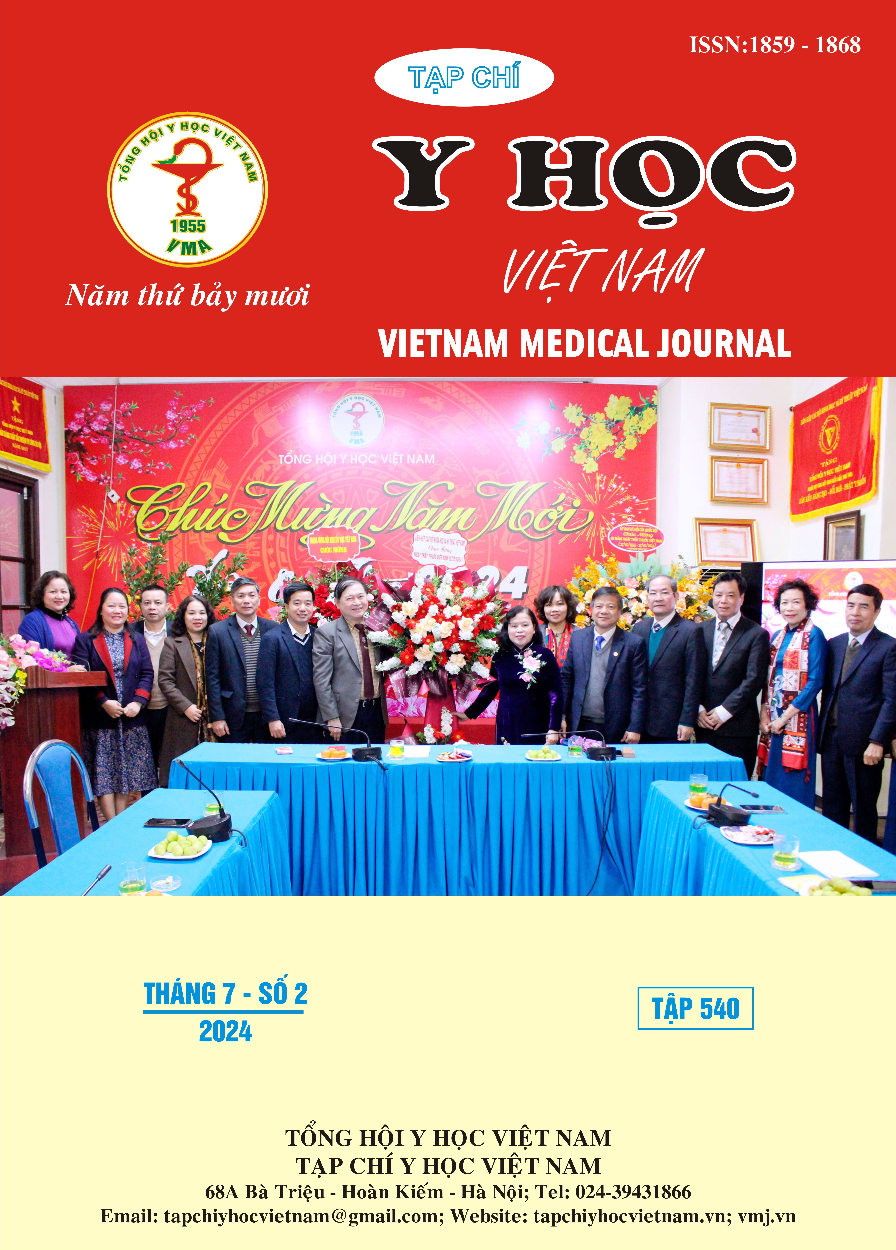RESULTS OF ENDOVASCULAR INTERVENTION FOR ABDOMINAL AORTIC ANEURYSM AT CHO RAY HOSPITAL
Main Article Content
Abstract
Background: Endovascular Aneurysm Repair (EVAR) for abdominal aortic aneurysms has been the preferred alternative to surgery for more than 20 years [1]. Nowadays, endovascular intervention to treat ruptured abdominal aortic aneurysms instead of heavy surgery is no longer strange. Moreover, the results have been proven to reduce complications compared to surgery [2], [3]. Endovascular intervention techniques to treat abdominal aortic aneurysms are a trend because of their minimal invasiveness, quick recovery time, and fewer complications and deaths in the short term. In a meta-analysis of 51 studies, author Bulder RM and colleagues (2019) recorded a 30-day mortality rate after the intervention of 1.16% compared to 3.27% of surgery [6]. However, the survival rate in the follow-up period did not change significantly compared with surgery. That is also why we conducted this study to evaluate the long-term results of endovascular intervention in treating abdominal aortic aneurysms.Methods: Retrospective description of case series. Results: The study's average age was 63.5 ± 18.1 years, with the majority of participants being male. Lipid metabolism disorders, hypertension, and smoking account for 73.9%, 66.2%, and 64.6%, respectively. The aneurysm neck has an average length, diameter, and angle of 18.9 mm, respectively, 22.4 mm and 57.1 degrees. The average diameter of the aneurysm body was 70.8 mm. The mean diameters of the common and external iliac arteries were 33.9 mm and 7.8 mm, respectively. Common iliac stent graft placement accounted for 50.8%. In addition, unilateral and bilateral external iliac stent graft placement accounted for 20% and 29.9% of the study sample, respectively. Most of the internal iliac artery was occluded with an amplatzer, accounting for 40% of the study sample. The average intervention time is 105.4 minutes; the average hospital stay is three days. Technical success reached 100% of the study sample, and the mortality rate after 30 days of intervention was 1.5%; Graft leaks after intervention and follow-up period accounted for 9.2% and 6.3%, respectively. The survival rate in the follow-up period accounted for 87.7% of the study sample. Conclusion: EVAR treatment of infrarenal abdominal aortic aneurysm has a high technical success rate, few complications, and a high survival rate in the follow-up period. Therefore, this method is effective, safe, and has few complications.
Article Details
Keywords
Endovascular Aneurysm Repair (EVAR), abdominal aortic aneurysm, endoleak.
References
2. Greenhalgh RM, Brown LC, Kwong GP, Powell JT, Thompson SG; EVARtrialparti- cipantst. Comparison of endovascular aneurysm repair with open repair in patients with abdominal aortic aneurysm (EVAR trial 1), 30-day operative mortality results: randomised controlled trial. Lancet 2004;364:843–848.
3. Prinssen M, Verhoeven EL, Buth J, Cuypers PW, vanSambeek MR, Balm R, Buskens E, Grobbee DE, Blankensteijn JD; Dutch Randomized Endovascular Aneurysm Man- agement (DREAM) Trial Group. A randomized trial comparing conventional and endovascular repair of abdominal aortic aneurysms. N Engl J Med 2004;351: 1607 – 1618.
4. AlOthman O, Bobat S. Comparison of the short and long- term outcomes of endovascular repair and open surgical repair in the treatment of unruptured abdominal aortic an- eurysms: meta-analysis and systematic review. Cureus. 2020;12(8):e9683.
5. Giannopoulos S, Kokkinidis DG, Armstrong EJ. Long-Term outcomes of endovascular vs open surgical repair for Abdominal Aortic Aneurysms: a meta-analysis of randomized trials. Cardiovasc Revasc Med. 2020;21(10):1253-1259.
6. Bulder, R.M., Bastiaannet, E., Hamming, J.F., & Lindeman, J.H. (2019). Meta‐analysis of long‐term survival after elective endovascular or open repair of abdominal aortic aneurysm. British Journal of Surgery, 106.
7. Yei K, Mathlouthi A, Naazie I, Elsayed N, Clary B, Malas M. Long-term Outcomes Associated With Open vs Endovascular Abdominal Aortic Aneurysm Repair in a Medicare-Matched Database. JAMA Netw Open. 2022 May 2;5(5):e2212081.
8. Scallan O, Novick T, Power AH, DeRose G, Duncan A, Dubois L. Long-term outcomes comparing endovascular and open abdominal aortic aneurysm repair in octogenarians. J Vasc Surg. 2020 Apr;71(4):1162-1168.
9. Chandra V, Trang K, Virgin-Downey W, Dalman RL, Mell MW. Long-term outcomes after repair of symptomatic abdominal aortic aneurysms. J Vasc Surg. 2018 Nov;68(5):1360-1366.


